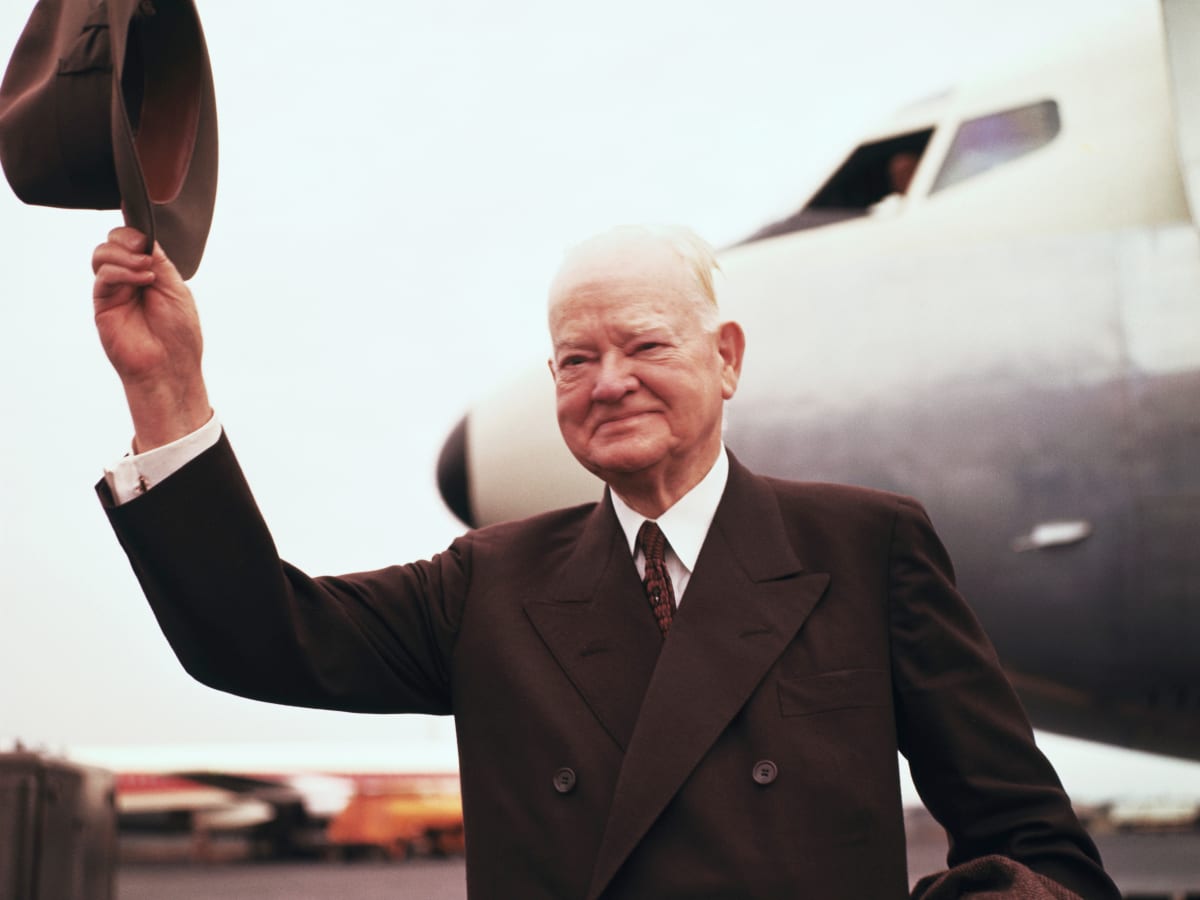
Orphaned at the age of ten, Herbert Hoover would go on to become the 31st President of the United States. His entire life—from hardscrabble beginnings to an adulthood filled with power and wealth—is the stuff of Hollywood movies. As President, Hoover was a Republican who became very well-known for his humanitarian efforts to provide relief to millions of Europeans during and after World War I. A mining engineer by occupation, Hoover started his professional career in the late 19th century working for mining companies in places like Australia and China. By 1914, his pauper days were over and the former orphan was now worth an estimated $4 million. Before being elected President in 1929, Hoover also served in several key federal positions, including head of the U.S. Food Administration and U.S. Secretary of Commerce. As President, he had several ambitious plans which were thwarted by the Wall Street Crash of 1929 that plunged the economy into crisis within months of his taking office. Nonetheless, Hoover's life has been memorialized in the names of several things, including the Hoover Dam, and numerous elementary, middle, and high schools across the U.S. Two minor planets, 932 Hooveria and 1363 Herberta, are also named in his honor.
Hoover also holds bragging rights for being a member of Stanford University’s inaugural "Pioneer Class," which he entered in 1891 despite failing all the entrance exams except mathematics. Hoover would always hold his alma mater in high esteem, even claiming to be the first student at Stanford University by virtue of having been the first person in the first class to sleep in the dormitory. At Stanford, he switched his major from mechanical engineering to geology after working for John Casper Branner, the chair of Stanford's geology department. He also showed signs of the entrepreneurial flair that would later distinguish his commercial and political career. To reduce his costs in his sophomore year, Hoover co-founded the first student housing cooperative at Stanford, "Romero Hall." Despite being a mediocre student, he won election as student treasurer, served as student manager of both the baseball and football teams, and helped organize the inaugural Big Game versus the University of California. In 1895, he graduated with a degree in geology.
By 1920, Hoover and his family had returned to his alma mater, building a handsome house on the Stanford campus. He would later donate his home to the University, which is now the official residence of the president of Stanford University and a National Historic Landmark. In addition, Hoover established the Hoover War Collection at Stanford University. Also located at Stanford is the Hoover Institute, a think tank and research institution started by Hoover. During his many years of retirement, Hoover remained integrally involved in the Hoover Institute and Library as a significant benefactor, fund-raiser, and principal provider of guiding inspiration.
